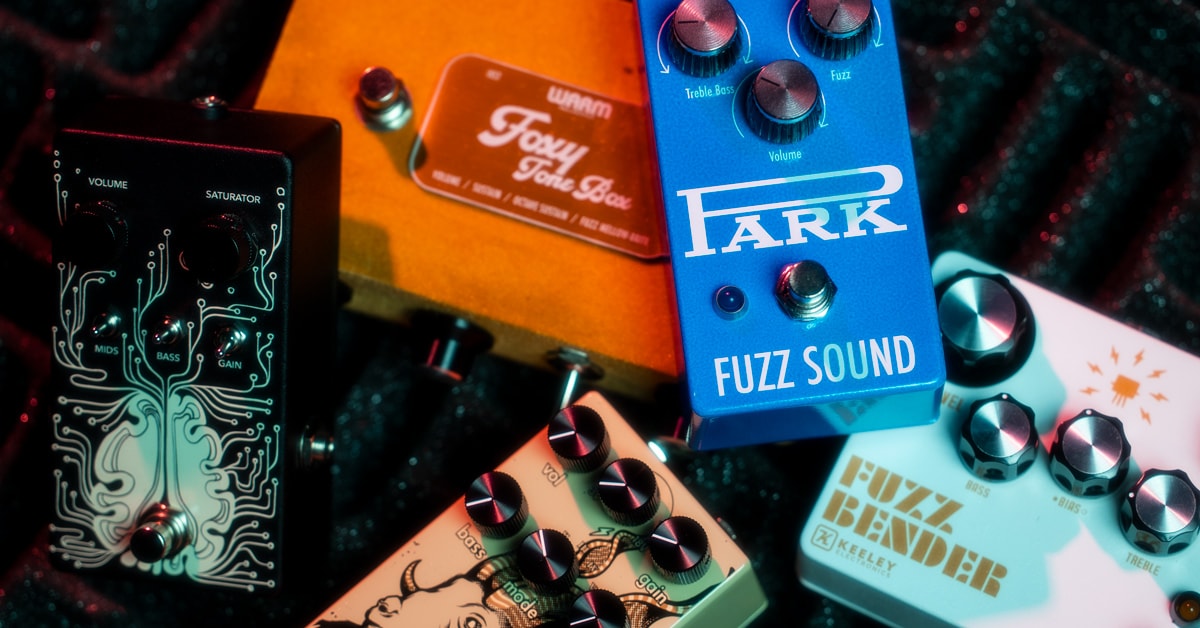British shoegaze glimmered onto the music scene in the late 1980s, brandishing lush, undulating guitar textures, and much like punk rock a decade or so earlier, the style became a club where the passé, the predictable and the conventional were not invited. In many ways, shoegaze became a call to action for curious and adventurous guitarists seeking to continue punk's dismantling of '70s fretboard theatrics and clichés.
The first salvo was obvious. Many pioneers of the style drew back from spectacle and agitation, instead concentrating exclusively—and almost beatifically—on the torrents of sound they were conjuring. After years of rock stars pummeling fans with shock-and-awe stage tactics, shoegazers often acted as if the audience was invisible—hence, the often-dismissive label.
There was good reason for this detachment.
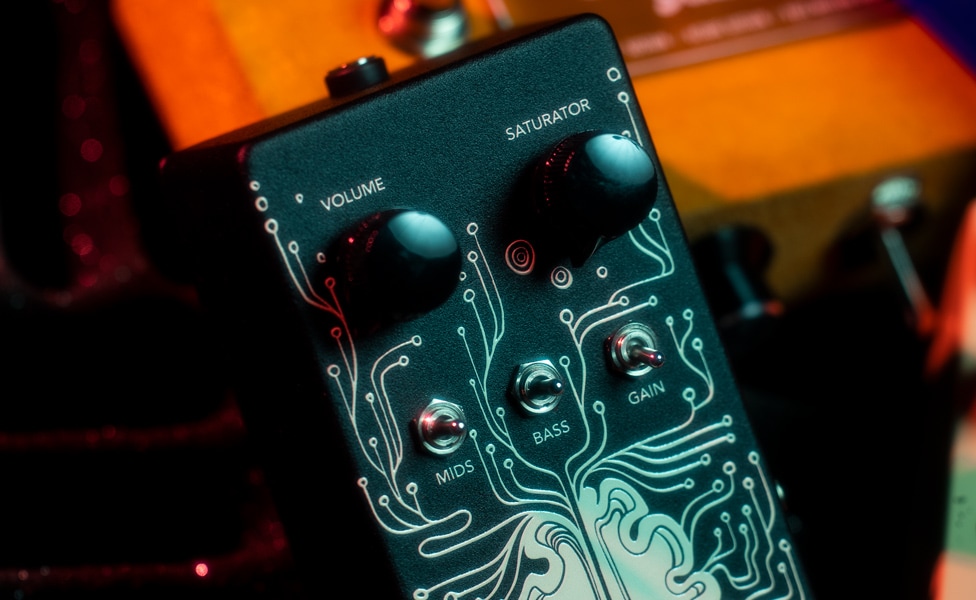
The focused-on-the-sound obsession by shoegaze guitarists was a calculated enterprise to expand the guitar's tonal impact beyond the brute force of punk and the traditions of classic rock. In seeking ways to give conventional guitar tones a kick in the pickups, sonic adventurers sought cagey and creative manipulations of effects to thrill, surprise and shock with spell-inducing textures of cinematic proportions. The ensuing torrent of savage and dreamy sounds required fuzz and distortion boxes, rack processors, reverbs, delays and modulation pedals. Lots of them.
While the basic architecture of shoegaze was a cacophony of fuzz, the roar and gristle were often bathed in reverb and delay to magnify and sustain the mesmerizing swells of sound, as well as transform simple or repeating melodic figures into astounding audio spectacles. And, just to underscore that the '60s and '70s still had a bit of fight left in them during the first wave of shoegaze guitar-tone insurrection, the circuits of many genre-approved fuzz pedals were based on old-school models, such as Big Muffs, Tone Benders, Fuzz Faces and other originators.
In this guide, we're focusing on fuzz pedals, but don't miss The Best Reverb Pedals for Shoegaze and The Best Delay Pedals for Shoegaze and our all-encompassing guide to The Best Pedals for Shoegaze or you'll only get a small part of the tone tale.
Table of Contents
First-Generation Shoegaze Guitarists
Notable Influences on Shoegaze
Using Fuzz Pedals in Shoegaze Music
Top Fuzz Pedals for Shoegaze
Most Sonically Versatile Fuzz Pedals
Death By Audio Apocalypse Fuzz
EarthQuaker Devices Hoof Reaper V2
Keeley Electronics Fuzz Bender
Walrus Audio Eons Five-State Fuzz
Best Fuzz for Generating Chaos
EarthQuaker Devices Hizumitas Fuzz Sustainar
Best Vintage Fuzz Series
JHS Pedals Supreme 1972 Japan Fuzz
Best Fuzz for Articulate Anarchy
Heather Brown Electronicals Sensation Fuzzdrive
Best Fuzz Pedals for Big Muff Disciples
Electro-Harmonix Op-Amp Big Muff Pi
JHS Pedals Muffuletta Distortion/Fuzz
Electro-Harmonix J Mascis Rams Head Big Muff Pi
Best Fuzz Pedals for Old-School Buzz
EarthQuaker Devices Park Fuzz Sound
Fender Shields Blender
Warm Audio Foxy Tone Box Octave Fuzz
Pedal Force
First-Generation Shoegaze Guitarists
Most of the OG players who popularized the shoegaze and dream pop movements were far less interested in regurgitating (or even modifying) time-honored riffs, as they were inspired to create droning squalls of otherworldly proportions. Sonic disrupters Kevin Shields and Bilinda Butcher of My Bloody Valentine meticulously fashioned perhaps shoegaze's stylistic benchmark with the band's fraught but magnificent Loveless album in 1991. The guitars were churning, chaotic, scruffy, corpulent, modulated (through Shields' whammy technique with his Fender Jazzmaster), soaring, terrifying, unrelenting, strange and bloody freaking brilliant. Given the more than two-year gestation of Loveless required recording done in 19 studios, Shields and Butcher likely had a slew of amps at their disposal, but Shields identified the following during a 2018 Sound on Sound article about the making of “Only Shallow”—a Marshall JCM800, a Dan Armstong hybrid solid-state/tube amp owned by The Elephant studios and a VOX AC4 and a VOX AC30.
Ride's Andy Bell and Mark Gardener—arguably claiming the mantle of shoegaze's version of the classic-rock tag team of Steve Hunter and Dick Wagner—unleashed interlocking surges of fuzz, feedback, wah-wah lines and ferocity. (Bell usually plugged into Marshall amps and Gardner preferred a Hiwatt head and Marshall cabinet.) Neil Halstead, Rachel Goswell and Christian Savill fashioned dreamier soundscapes with Slowdive—although the group's spell-like reveries could be both jangly and sparkling or fuzzy and violent.
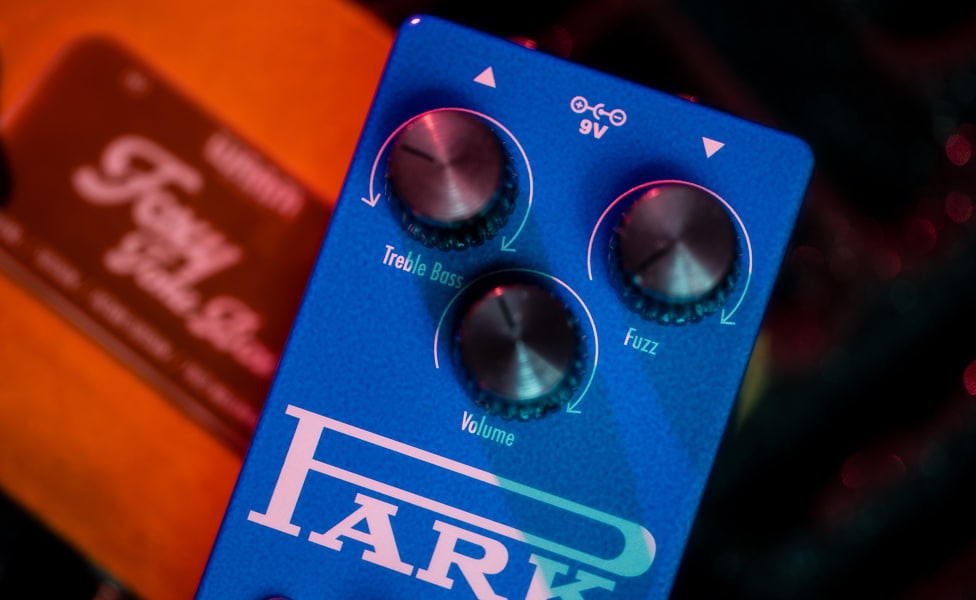
Proving that shoegaze could take a few stylistic twists and turns, Jason Pierce and Peter Kember of Spacemen 3 brought some English eccentricity to the fore with elements of trance, psychedelia (with echoes of Syd Barrett's The Madcap Laughs), folk and even a dollop of old-school blues repetition.
In yet another break with so-called rock convention, guitarists in shoegaze bands were gender diverse. The community included Miki Berenyi and Emma Anderson (Lush), Meriel Barham (Pale Saints), Toni Halliday (Curve) and My Bloody Valentine bassist Debbie Googe. You might even win a debate or two by identifying some shoegaze vocalists as faux instrumentalists. Vocals were typically mixed down into the roar of the music, heavily effected, and singers such as Cocteau Twins' Elizabeth Fraser and Swallow's Louise Trehy could sound like EBowed guitars, synthesizer pads or alien music boxes.
In perhaps a final act of insolence, shoegaze guitarists tended to avoid the iconic instruments of ’70s rock, such as Les Pauls, SGs, Stratocasters, Telecasters, Gretsches and so on. Instead, they preferred offset guitars that had, up until then, fallen out of favor. For example, Shield’s partner in buzzy crime, Bilinda Butcher often switched between a Fender Mustang, Fender Mustang Thinline, Fender Jaguar, Charvel Surfcaster and an “offset adjacent” Gibson Firebird III Non-Reverse. Lush’s Miki Berenyi initially used a Fender Jaguar, and co-guitarist Emma Anderson also opted for a Fender Jaguar, as well as a non-offset Fender Telecaster Thinline. Slowdive’s Rachel Goswell slung a Fender Jazzmaster for a time, as did her band mate Christian Savill.
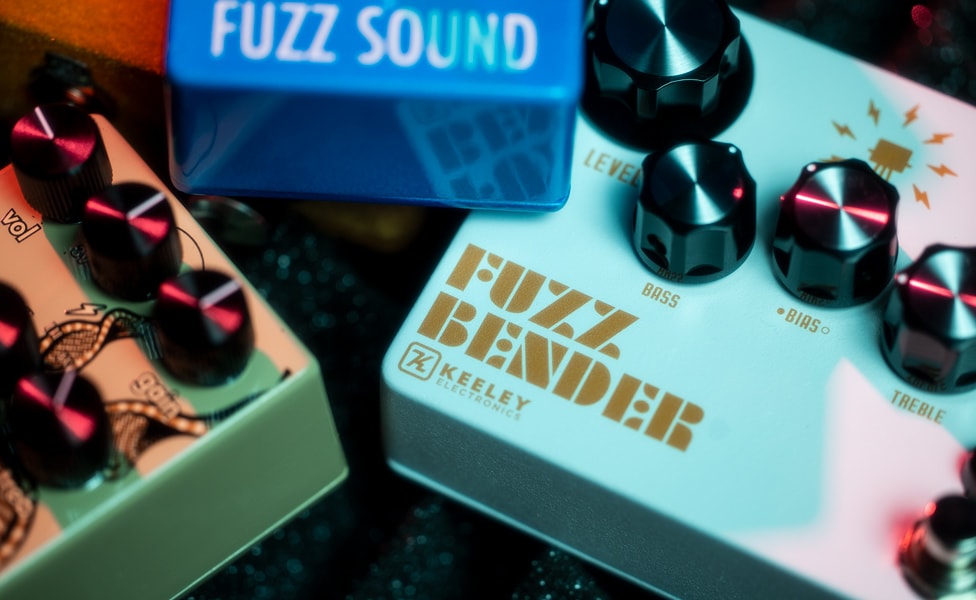
But while the guitar part of the shoegaze equation may favor offsets, a fair amount of shoegaze players would switch between a selection of different guitars. This is not really a surprise, as all styles of players tend to grab whatever model best fits the song at hand, but it makes it difficult to claim that a clear majority of groundbreaking shoegaze recordings were made exclusively using offsets. Cocteau Twins guitarist Robin Guthrie—himself a vital influence on shoegaze—perhaps said it best when he told Guitar Player in April 1996, “I’m not fussy about the guitars I use in the studio, because there’s never one single sound I’m trying to create. The effects treatments are how I hear things—not the actual piece of wood or overall sound of the guitar.”
Notable Influences on Shoegaze
As a musical style, shoegaze absorbed a slew of influences, and while bands such as The Jesus and Mary Chain, The Cure, Siouxsie and the Banshees and The Velvet Underground are often referenced as touchstones, the rich tradition of "effected fuzz/distortion" can even be traced to Link Wray's mythic "Rumble" in 1958. Add a huge reverb to the song's buzz and vibrato finale, and you have a very nice shoegaze-style drone. Other interesting stimuli on the genre include the soaring fuzzed-out melody and insistent groove of 1972's "Hero" by Germany's Neu and the massively loud guitar orchestrations of New York composer Glenn Branca. Some much newer artists making their marks in the genre include Slow Crush, They Are Gutting A Body Of Water and Feeble Little Horse. It all goes to show that forward-thinking musicians are creatively unbound, and that is one of the glories of shoegaze—you make your own glorious noise.
Using Fuzz Pedals in Shoegaze Music
Devising your personal style of shoegaze guitar should be an entertaining and exciting journey. There are so many ingredients you can choose to use from the genre-defining staples of fuzz, reverb, delay, feedback, chorus, tremolo and other modulation effects. And you don't have to limit yourself to just one pedal (or signal processor) for each effect. Combining, blending and orchestrating different pedals in each effects category is a key element in creating shoegaze sonics. For fuzz fanatics, this means you have a couple of really fun options.
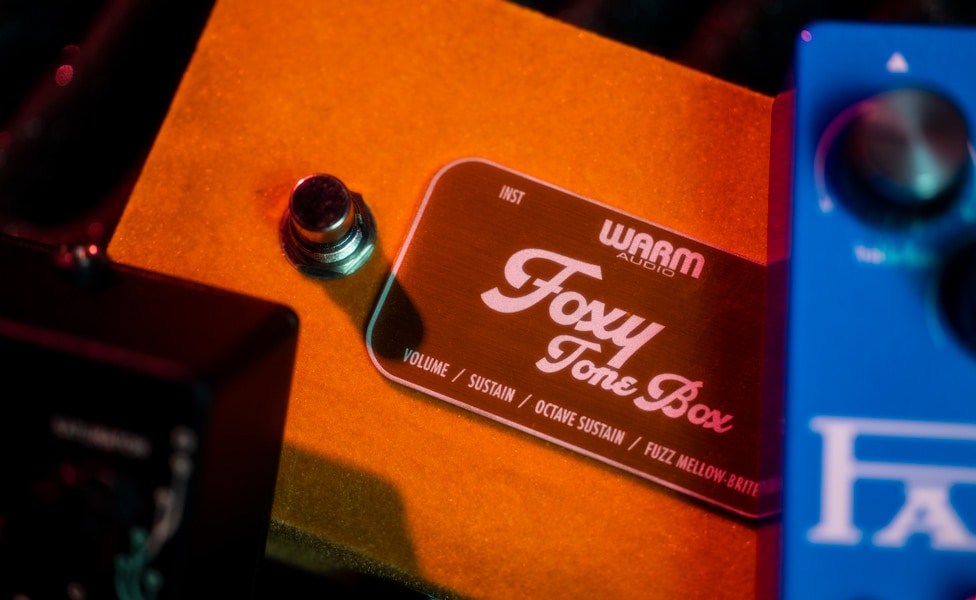
One fuzz for all. Select one crucial fuzz box that will drive the tone of everything you do, and for every song you play. This strategy is a good one if you're more interested in developing a singular sound than working with a wide and diverse fuzz palette for specific applications.
Different fuzz pedals for different parts. Those who like switching things up can seek multiple fuzz pedals that will be given very particular jobs. Perhaps one pedal will be for intro riffs only, another for verses and then other choices to handle choruses, solos, riffs, dreamy bits and pure chaos. As you work through your song, this method lets you arrange the perfect buzz for each musical part.
Fuzz blends. While it may take some foot choreography if you're using a pedalboard (or two)—or signal-chain programming if you prefer digital multi-effects processors—you can match specific fuzz sounds to individual reverbs, delays and so on. For example, you may decide a thin-sounding fuzz works best with a particular lush reverb. Or a filtered fuzz keeps the grind more upfront during the decay of a favorite delay pedal. Find your best team ups and go forth.
Fuzz gumbo. A kitchen sink approach can create massively cool whirlwinds of blitzkrieged snarl. Route a filtered fuzz pedal into a saturated fuzz and keep the sonic storm raging by also adding clean, dark, super compressed or wide-open fuzz flavors. The fusion might be pure genius or a beautiful mess, but just have a blast experimenting until the audio concoction is something incredible.
Top Fuzz Pedals for Shoegaze
Here are some recommendations for fuzz boxes you can audition for specific musical applications. Keep in mind that a particular pedal can have varied and multiple uses, but these broad strokes should help you zero in on the fuzz sounds and features that might be a perfect match for your textural explorations.
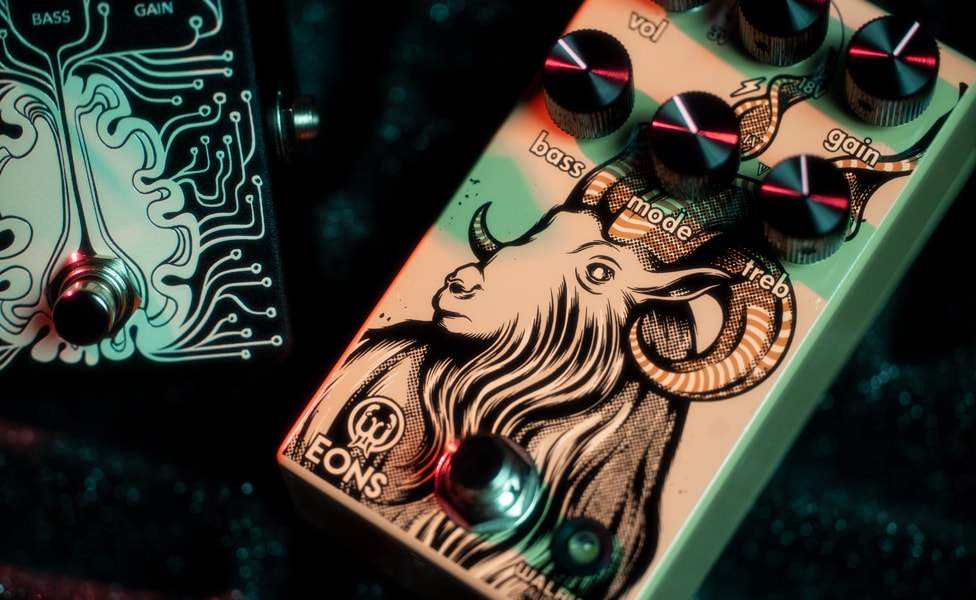
Most Sonically Versatile Fuzz Pedals
Death By Audio Apocalypse Fuzz
The aptly named Death By Audio Apocalypse Fuzz lets you crank up the pandemonium with the Drive control, then choose one of five post-amplifier choices to really bring down a zombie apocalypse of savage tone. The onslaught doesn't stop there. An onboard sweepable frequency equalizer further launches the sound into extremes of beautifully barbarous saturation. For a simpler—and less expensive—tool of audio annihilation, check out the Death By Audio Fuzz War effects pedal. In addition, DBA founder Oliver Ackermann is no stranger to sonic Armageddon. He's the leader of the "loudest band in New York"—the indie shoegaze outfit, A Place to Bury Strangers—and his company often builds pedals expressly for the group to wreak havoc on stage.
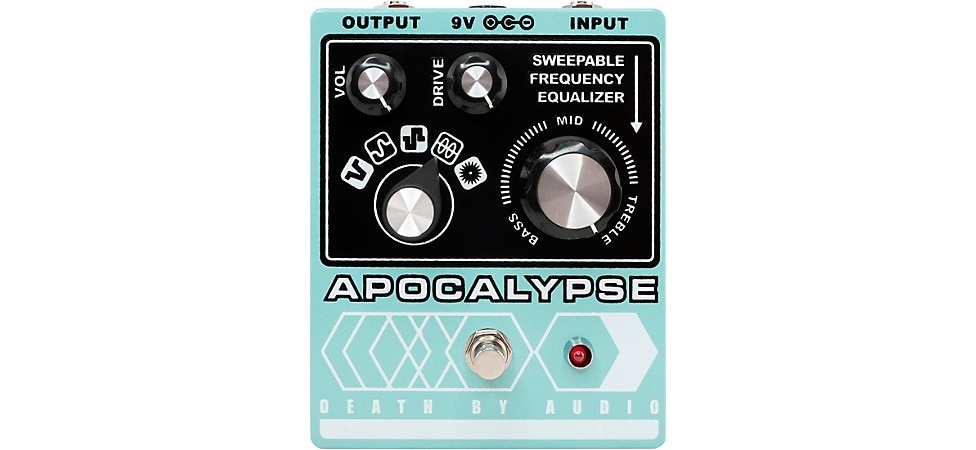
Pictured: Death By Audio Apocalypse Fuzz
EarthQuaker Devices Hoof Reaper V2
The EarthQuaker Devices Hoof Reaper V2 is a dynamic duo-style fuzz that combines a Big Muff green Russian emulation (Hoof) with a Tone Bender (Reaper) replication. The Hoof Reaper V2 makes use of hybrid silicon/germanium transistor circuitry, along with an analog octave up feature. You can go as subtle or potent as you please by using one fuzz flavor or the other, or unleash a tonal tempest of tumult by simultaneously combining the Hoof, Reaper and Octave sections.
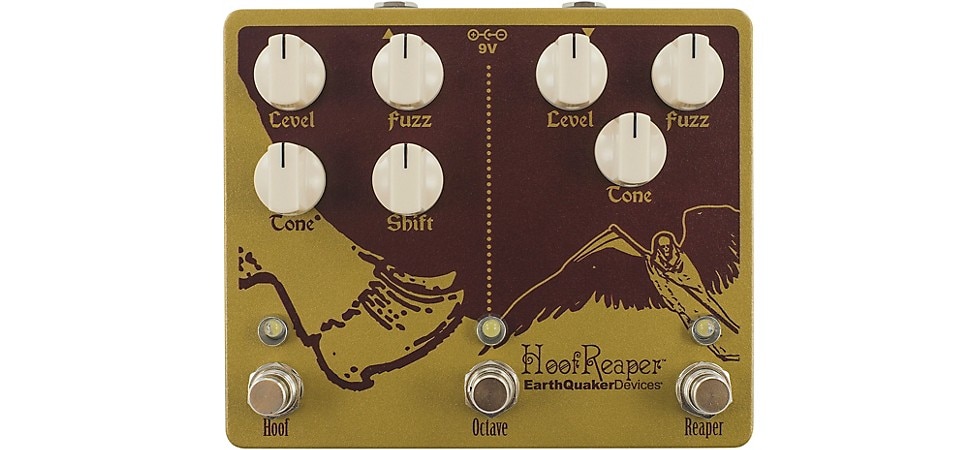
Pictured: EarthQuaker Devices Hoof Reaper V2
Keeley Electronics Fuzz Bender
Based around a classic Sola Sound Tone Bender from the mid 1960s, the Keeley Electronics Fuzz Bender adds a few tricks to the original design. First, it's a hybrid circuit that blends high-gain silicon and velvety germanium transistors. Then, you get more than 20dB of boost/cut at 100Hz and 10kHz to really pummel or undermine bass and treble frequencies. Finally, a Bias control lets you create all kinds of filter-y fuzz madness, from glitchy spittle to fat punch or jazzed, angular mids. Want a deeper dive into Tone Bender lore and its current pedal emulations? Check out The History of the Tone Bender.
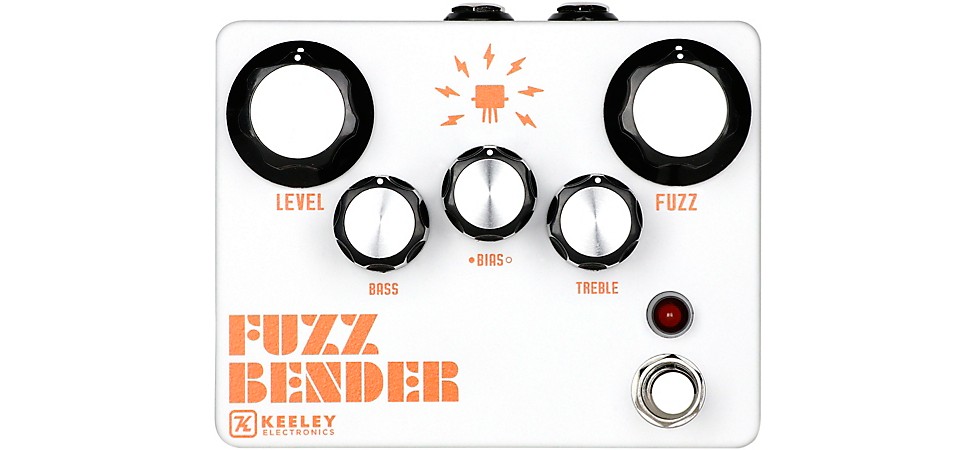
Pictured: Keeley Electronics Fuzz Bender
Walrus Audio Eons Five-State Fuzz
Providing five distinctive clipping modes and a Voltage control to crank up or starve the power, the Walrus Audio Eons Five-State Fuzz brings on fuzzy bedlam with your choice of silicon or germanium transistors, or LED diodes. In the "wrong" (meaning right) hands, the Eons' versatile tone shaping can deliver unique, explosive and fearsome snarl.
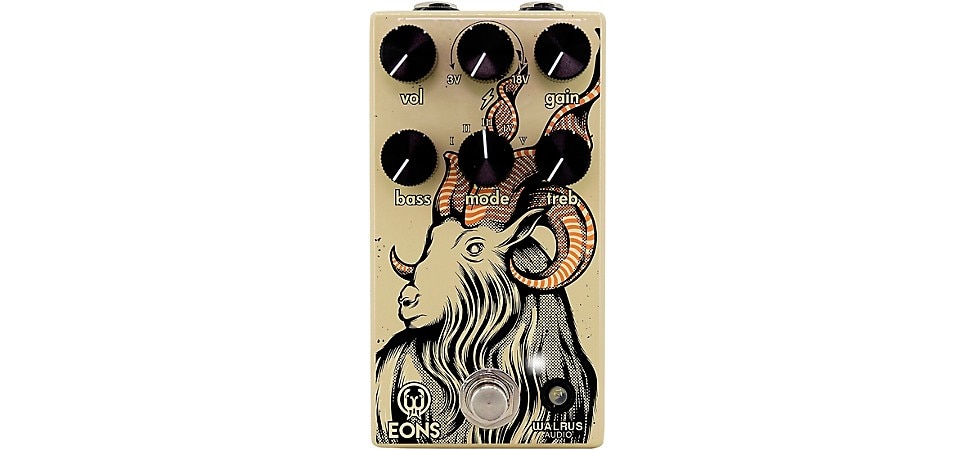
Pictured: Walrus Audio Eons Five-State Fuzz
Best Fuzz for Generating Chaos
EarthQuaker Devices Hizumitas Fuzz Sustainar
The EarthQuaker Devices Hizumitas Fuzz Sustainar is an accurate replica of the Elk "Big Muff" Sustainar—a '70s Big Muff clone likely manufactured by Hoshino Gakki in Japan—used by guitarist Wata of the experimental Japanese band Boris. Like the original, the Hizumitas produces considerable distortion with a ragged, aggressive edge balanced with fluid sustain. Despite the Hizumitas' belligerent fuzz, the saturation textures are articulate and coherent, which means your most vicious licks can be chaotic but clear.
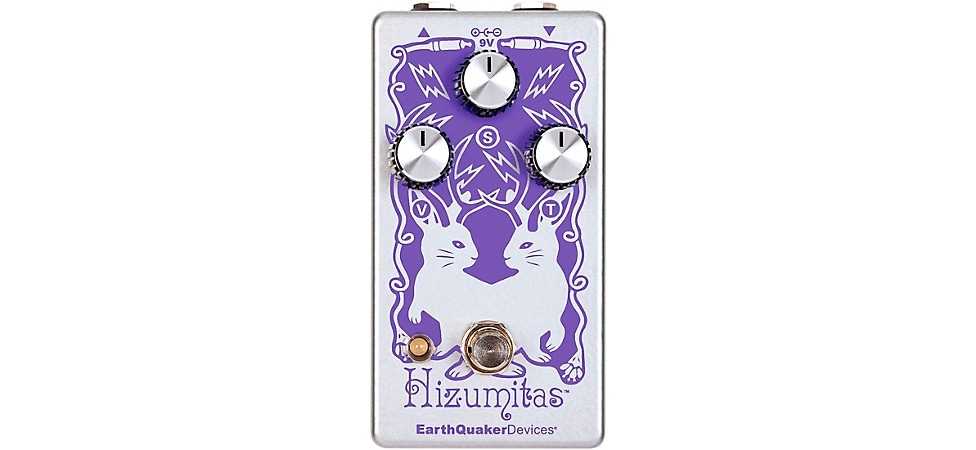
Pictured: EarthQuaker Devices Hizumitas Fuzz Sustainar
Best Vintage Fuzz Series
JHS Pedals Supreme 1972 Japan Fuzz
Part of the JHS "Legend of Fuzz" series, the JHS Pedals Supreme 1972 Japan Fuzz is an imitation of a 1972 Univox Super Fuzz model that produced breathtakingly vibrant and intense octave-fuzz saturation.
For those on the prowl for vintage fuzz flavors, the series also includes tributes to the 1973 Tone Bender MKIII, 1992 "Red Army" Big Muff, 1969 Arbiter Fuzz Face, 1973 Seamoon Fresh Fuzz, 1969 Kay Fuzz Tone and 1967 Jordan Electronics Boss Tone.
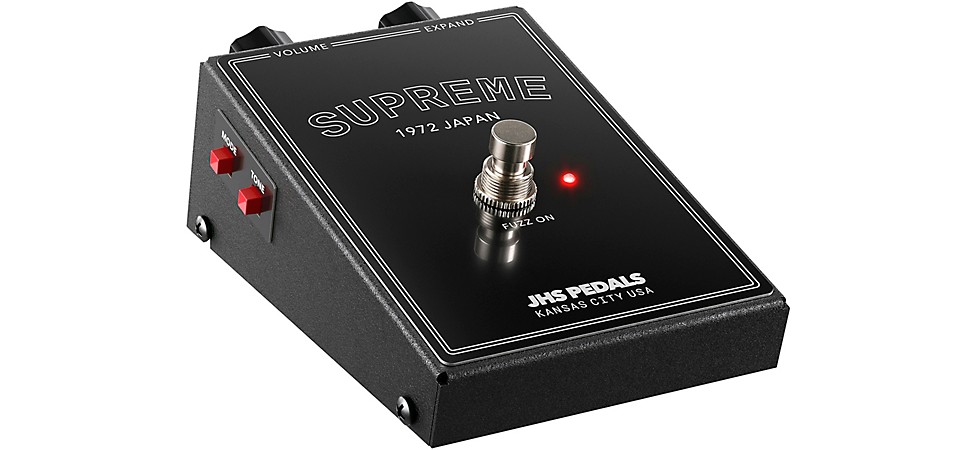
Pictured: JHS Pedals Supreme 1972 Japan Fuzz
Best Fuzz for Articulate Anarchy
Heather Brown Electronicals Sensation Fuzzdrive
The Heather Brown Electronicals Sensation Fuzzdrive is characterized as a fuzz/overdrive combo that utilizes three separate transistor gain stages to produce saturation, low-end grit and punchy mids, but without any sonic pandemonium. The Sensation Fuzzdrive is a good choice for adding an articulate layer to a fuzzy wash, or highlighting riffs and/or melodic lines within a dense music mix. For an interview with Heather Brown, check out Shaping Sound With Heather Brown Electronicals.
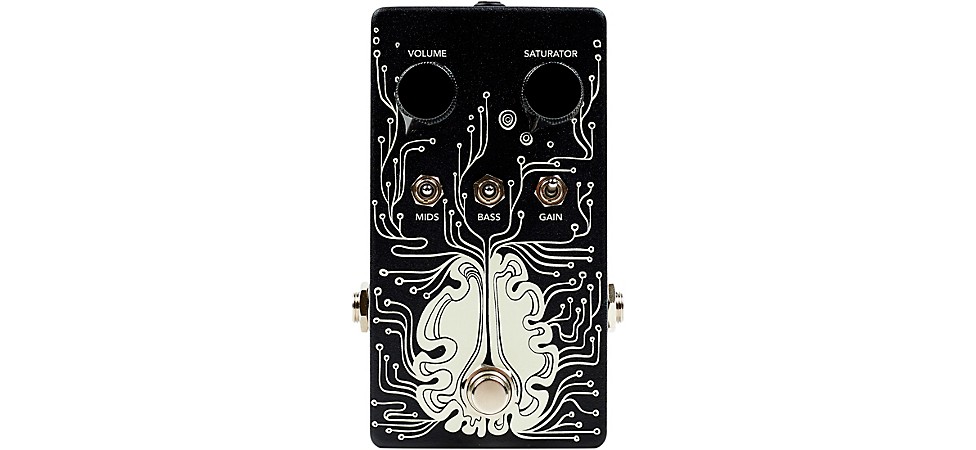
Pictured: Heather Brown Electronicals Sensation Fuzzdrive
Best Fuzz Pedals for Big Muff Disciples
Electro-Harmonix Op-Amp Big Muff Pi
The Electro-Harmonix Op-Amp Big Muff Pi Fuzz employs a simpler and cheaper-to-produce op-amp design—rather than transistors—and three gain stages (one less stage than transistor versions). Often referred to as Big Muff Version 4, the Op-Amp model produces an edgier, crunchier and gloriously buzzy sound with less volume and bass content than its transistor V3 siblings. Billy Corgan used an Op-Amp Big Muff on Smashing Pumpkin’s shoegaze-influenced 1993 album, Siamese Dream. For a chronicle and inventory of the many Big Muffs manufactured since Electro-Harmonix founder Mike Matthews kicked off the line in 1969, read A Guide to the Electro-Harmonix Big Muff.
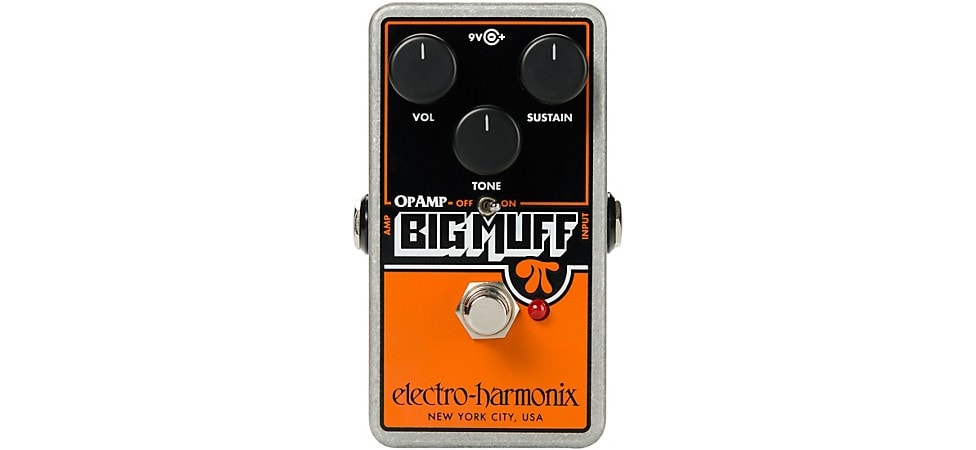
Pictured: Electro-Harmonix Op-Amp Big Muff Pi
JHS Pedals Muffuletta Distortion/Fuzz
The JHS Pedals Muffuletta Distortion/Fuzz packs five classic Big Muff circuits into a single box and tosses in a JHS version as a bonus. The Muff squad includes the aforementioned JHS 2015 (an open, less-compressed version), 1973 Ram's Head (scooped mids and a dark tone), 1969 Triangle (enhanced bass response and articulate mids), 1977 Pi (a more aggro sound), 1999 Russian (a slightly muddy and hazy tone with reduced bass content) and 1991 Civil War (bright mids and reduced gain). The Muffuletta is like having the greatest hits of the Big Muff right underfoot.
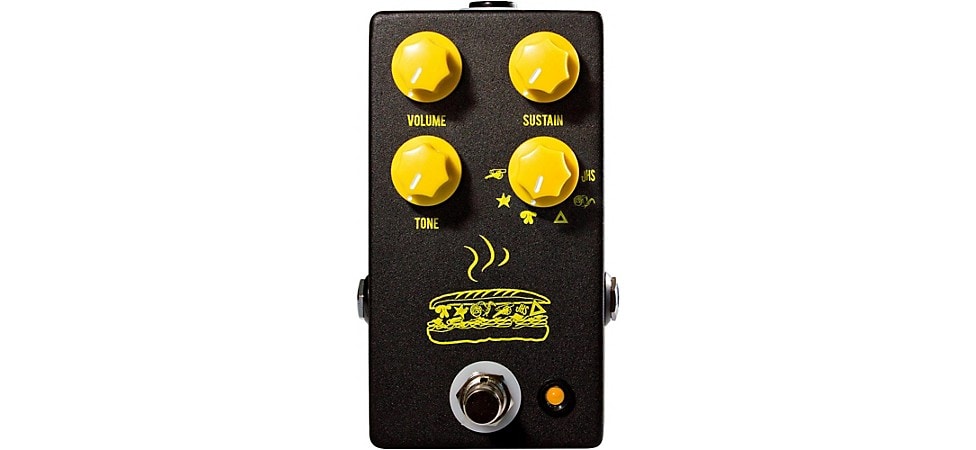
Pictured: JHS Pedals Muffuletta Distortion/Fuzz
Electro-Harmonix J Mascis Rams Head Big Muff Pi
Dinosaur Jr. founder and alt-rock icon J Mascis is so in love with Big Muffs that he maintains a museum-worthy collection of the pedals in his studio. The Electro-Harmonix J Mascis Ram's Head Big Muff Pi Distortion/Sustainer is a meticulous update of his favorite, go-to Muff—a 1973 Ram's Head model. Mascis kept the distinctive, aggressive growl of the original, but increased the clarity and dynamic range.
The guitarist also collaborated with pedalmakers Wren and Cuff on two more iterations of his #1 Big Muff—the Wren and Cuff Garbage Face J Mascis Signature and Wren and Cuff Garbage Face Jr J Mascis Signature Fuzz.
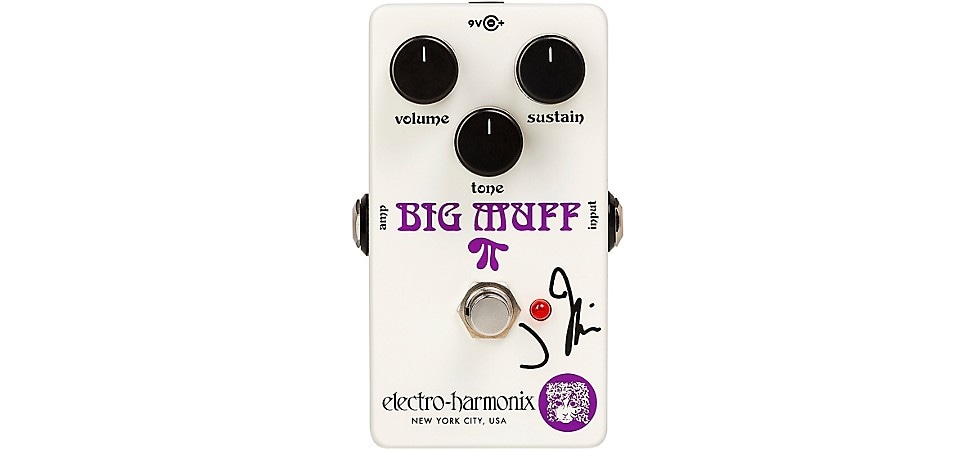
Pictured: Electro-Harmonix J Mascis Rams Head Big Muff Pi
Best Fuzz Pedals for Old-School Buzz
EarthQuaker Devices Park Fuzz Sound
The EarthQuaker Devices Park Fuzz Vintage Tone emulates the '60s Park Fuzz Sound using similar circuitry designer Gary Hurst devised for Sola Sound pedals, such as the Tone Bender MKIII. The EarthQuaker Park Fuzz uses germanium transistors—just like the original—but upgrades the range of the fuzz tone, reduces noise, and adds a 9-volt power jack and an LED indicator. Sonically, the Park Fuzz is creamy yet articulate, and offers enough buzzy attitude to soar over complex mixes and crowded bandstands. For more information on the development of the Park Fuzz, click to EarthQuaker Devices' Jamie Stillman Talks Tone Benders, Reapers and Reissuing the Park Fuzz Sound.
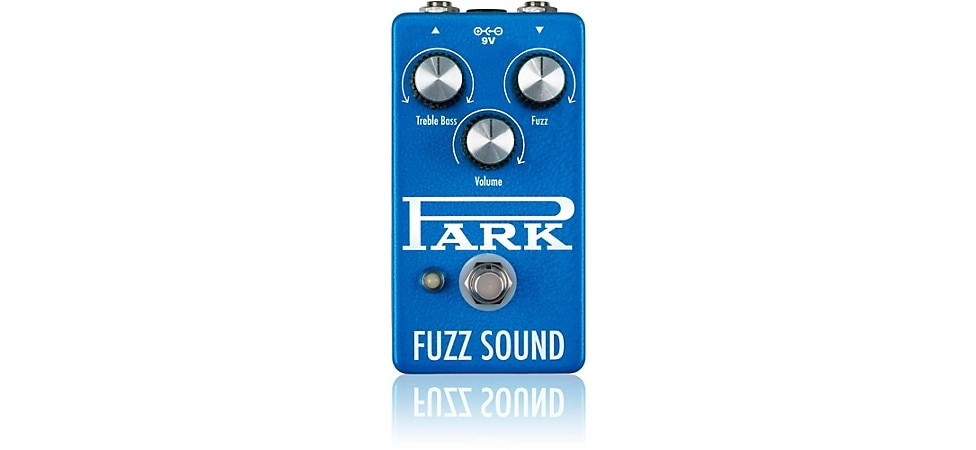
Pictured: EarthQuaker Devices Park Fuzz Sound
Fender Shields Blender
As principal architect of My Bloody Valentine’s genre-defining sound, Kevin Shields took a daringly imaginative, devil-may-care approach to alternative rock guitar. Shields’ unconventional and distinctive techniques spawned dense textural soundscapes, which became part of the blueprint for shoegaze’s impenetrable sonic citadels. One pivotal effect that affirmed his zeal for tonal chaos was a 1970s Fender Blender fuzz—reimagined as the Shields Blender. This two-channel, three-octave unit contains massive, splattering analog fuzz sounds and intuitive ways to mix them to your desired level of destruction. Footswitchable sag recreates the voltage-starved and dynamically responsive character of lurching, spluttering fuzz distortion, while vintage style offers a nostalgic nod to its ’70s inspiration. The Fender Shields Blender is a totally untamed fuzz monster.

Pictured: Fender Shields Blender
Warm Audio Foxy Tone Box Octave Fuzz
One of the most extreme fuzzes of the 1970s, was the Foxx Tone Machine—which telegraphed its peculiarity with a "fuzzy," flocked fabric covering in red or blue (a very rare version struts a red-white-and-blue, stars-and-stripes motif). The Warm Audio Foxy Tone Box Octave Fuzz brings on the vintage searing burn and high-octave screech with NOS (New Old Stock) Fairchild germanium transistors. It also honors the oddly cool look of the original with an orange velvet case.
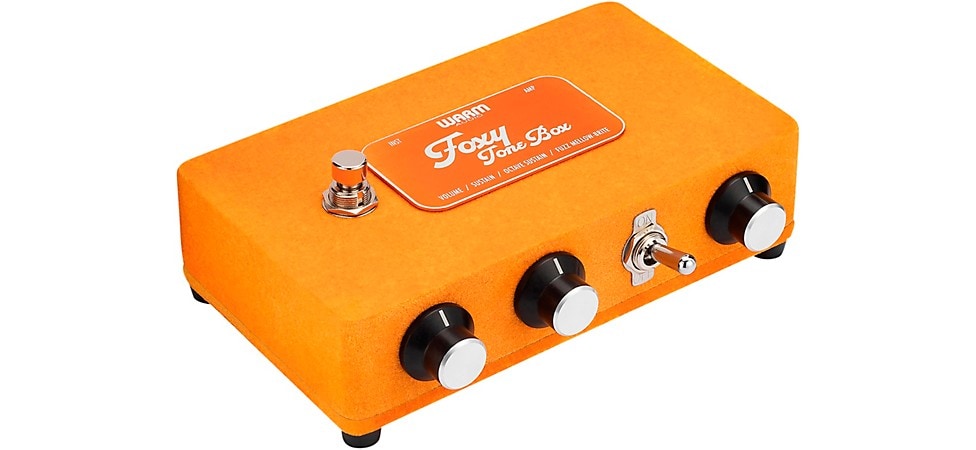
Pictured: Warm Audio Foxy Tone Box Octave Fuzz
Pedal Force
One of the splendors of shoegaze is that you can endeavor to break barriers and unravel convention, and, trust us, fuzz pedals are great gizmos for causing blissful mayhem or conjuring aural spells. Free your mind and create something astounding.




